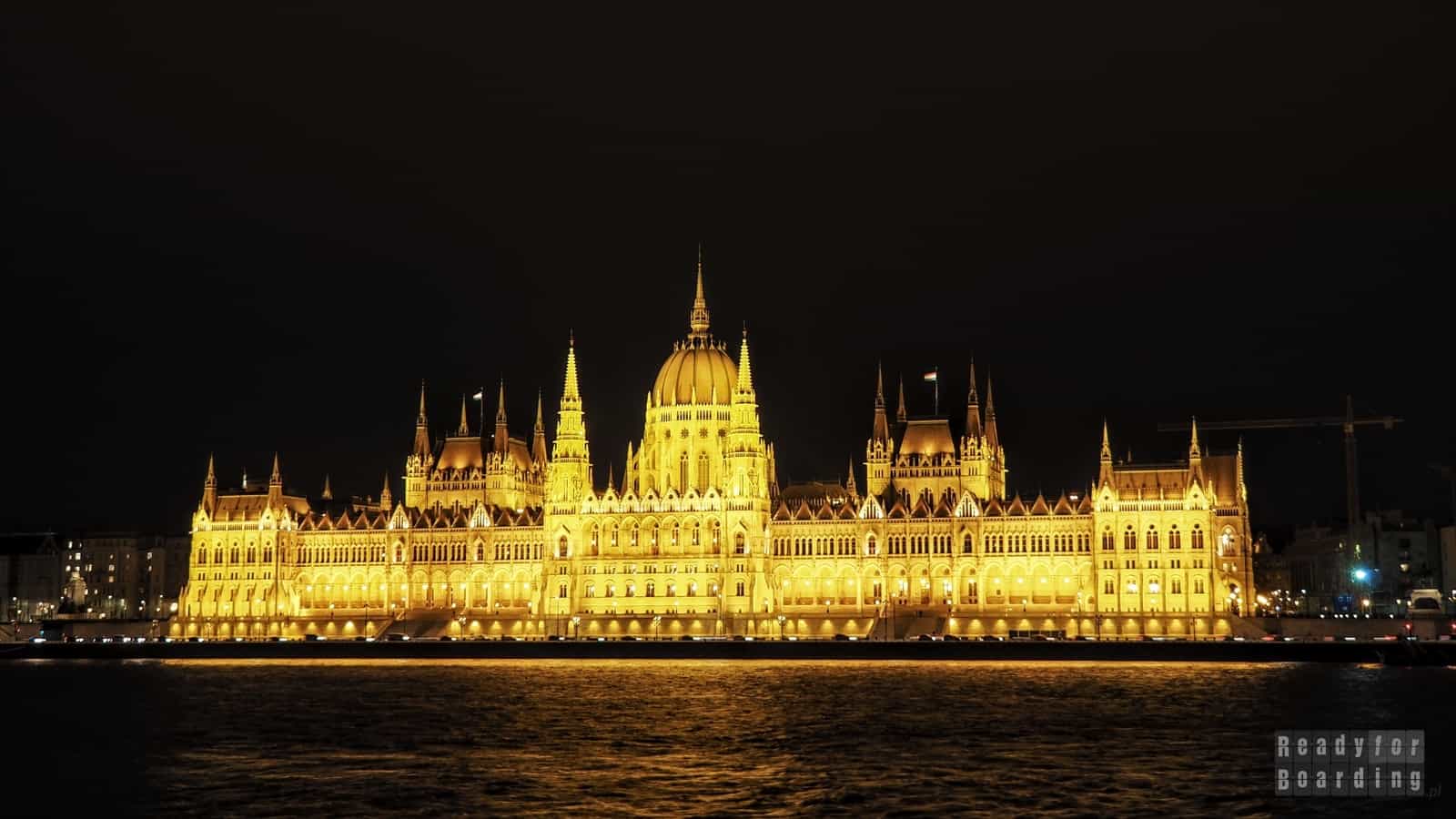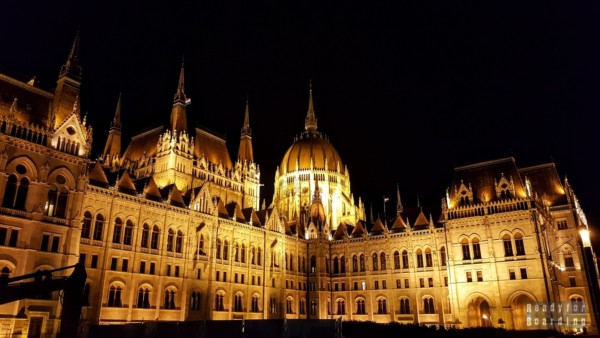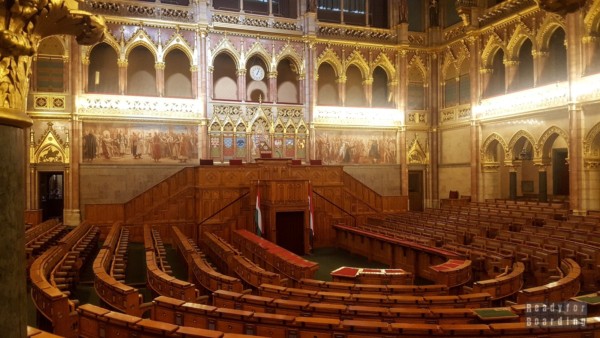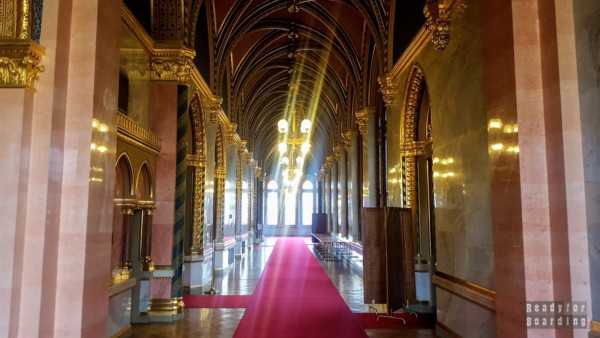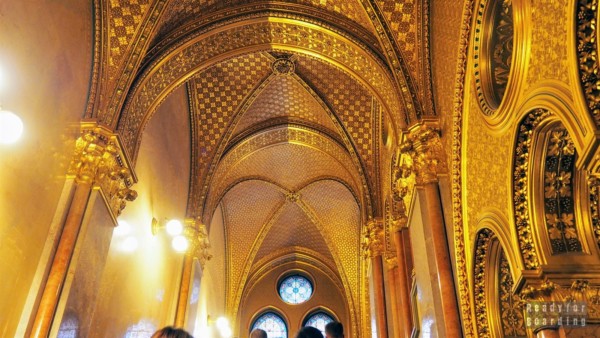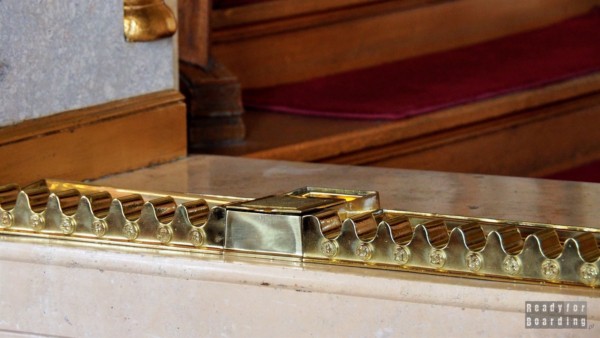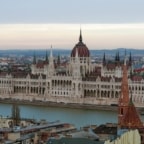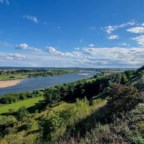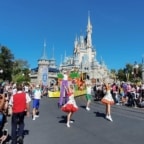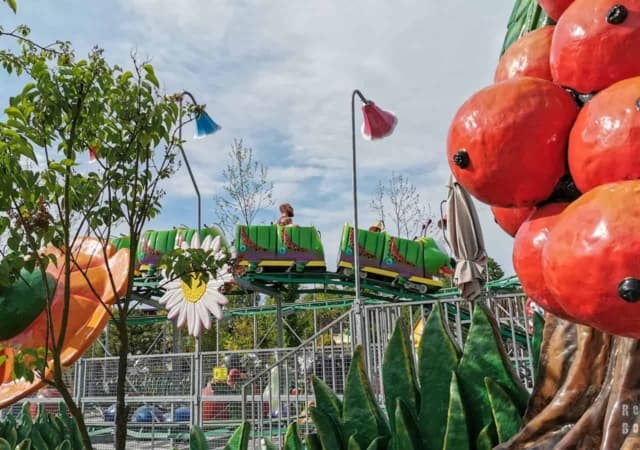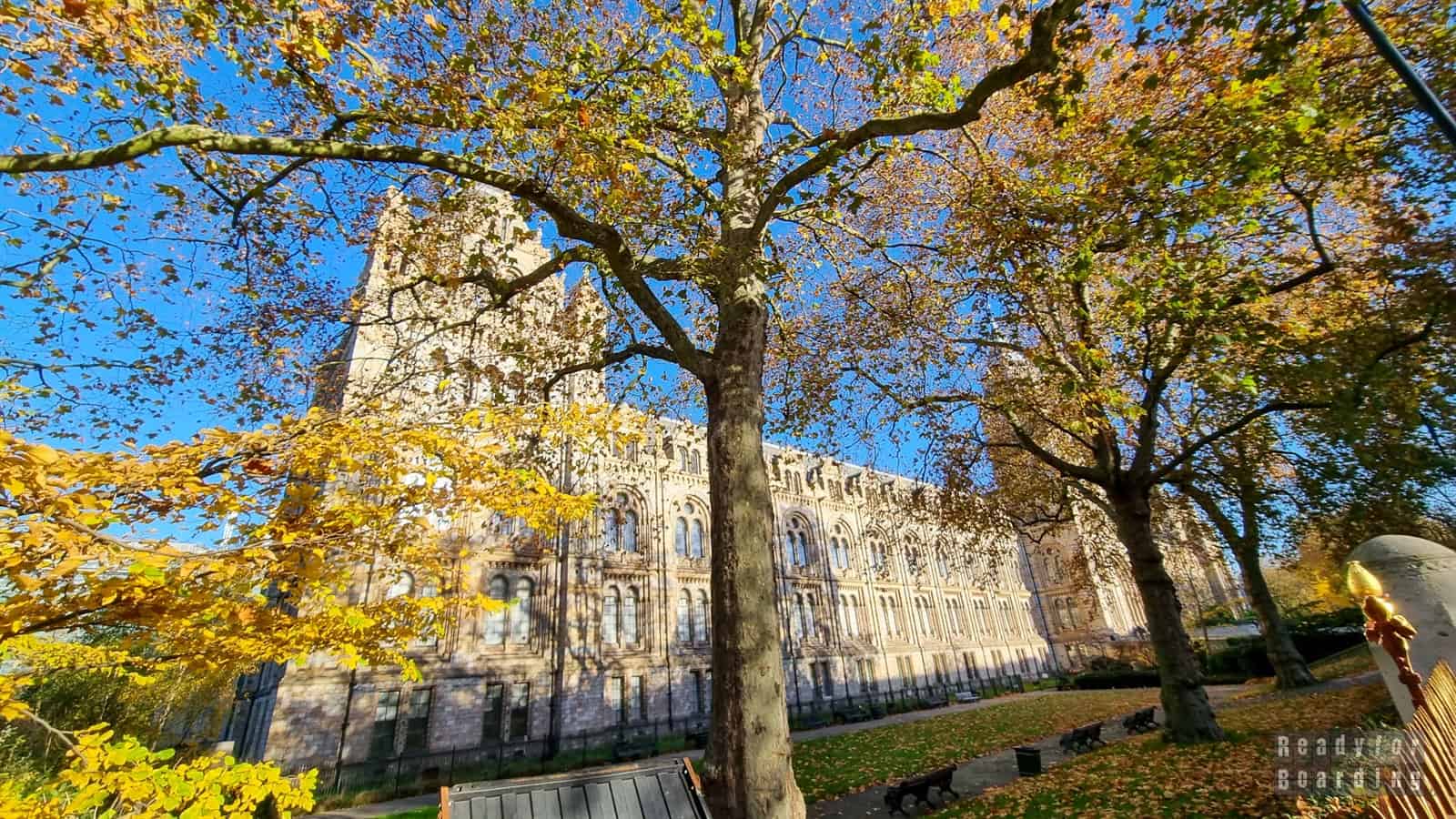It is a symbol of Budapest and also one of the largest parliament buildings in the world. It looks phenomenal both during the day and at night. Today we invite you to take a tour of the interior of the parliament building in Budapest.
This building is a must-see for anyone coming to visit Budapest. It could not have been any different in our case. On the very first day, we took an evening stroll through the streets of Pest until we finally arrived at the illuminated neo-Gothic edifice. The next day we admired it from afar, from the other bank of the Danube, from Castle Hill, Fisherman’s Bastion and Gellert Hill. This is the point that dominates the skyline in this part of the city, and no wonder, since in size it trumps most parliament buildings around the world. We also managed to go inside, which we highly recommend, because inside are Hungary’s most important relics.
Table of contents
Budapest Parliament
At first glance, there are a lot of similarities between the seats of government in Budapest and London – both in a neo-Gothic style, both right on the river. However, it is the one on the Danube that is larger, although only half of it is actually used, with the other half open to the public and for various occasions and events. This by no means means means that one can enter the parliament just like that from the street. Tours are only possible in groups with a guide at specific times.
But before we take you on a tour of the interior, a few interesting facts about the building itself:
- The parliament building in Budapest (Hungarian: Országház) is the largest building in Hungary and the second largest parliament building in Europe (it is surpassed only by the Palace of Parliament in Bucharest).
- Its area is 18,000 square meters
[source].
. - At the same time, it is one of the most visited – about half a million visitors come here annually.
- There are 700 rooms in the building; there are meeting rooms, the offices of parliamentarians and even ministry headquarters.
Where did the idea to build such a grand parliamentary seat come from, anyway? The decision to build it was made after the merger of the three cities of Buda, Óbuda and Pest into the Budapest we know today. The headquarters was to be impressive, large, with grandeur, and its construction began at the end of the 19th century in an area that did not have a good reputation. Construction was finally completed in 1904. It was originally intended to serve two chambers (the Lower House and the Upper House), but today the Hungarian parliament consists of only one – the Lower House.
Interestingly, buildings in the area cannot be taller than the dome, which is 96 meters – only St. Peter’s Basilica. The St. Stephen’s Church has the same height which is an intended effect: it is meant to represent the equality of secular and clerical authority
[source]
.
Practical information
We also hasten with some practical information that will help you better plan your visit to the building – we made some mistakes, such as trying to enter just like that from the street, which is not always so easy ;)
The entrance to the visitors’ section is to the north of the building. This is important information, because the entrance is not at all visible and marked, especially if you walk from the south. What’s more, you don’t enter through any visible door directly into the building, but have to enter through the so-called Visitor Center, which is located on level -1 and accessed by a staircase right next to the north entrance (fortunately, there are elevators). Downstairs there are cash registers, information, gift store, restaurant and group entrance.
It’s a good idea to take your first steps straight to the ticket offices and information desk, where there are displays showing how many seats are available for each hour. At each hour there is also information on what language the guide will speak. Apparently, you can also run into Polish groups, but on the day we were there, there were none.
It can be hard to get in from the get-go. As a rule, several of the nearest groups already have sold out tickets, we had to wait about an hour for the nearest free seats in the English group. Fortunately, we were not bored – there is a small restaurant downstairs, where you can wait and drink quite tasty coffee, and a souvenir store. In addition, the screens display a short presentation about the building, so you can already learn a lot about the place before you enter.
It is one of the few places where EU citizens pay less to enter. As a rule, we ended up in this group of visitors who had to pay more, so this was a pleasant surprise for us. The ticket price for EU citizens is HUF 2,400 per adult.
We recommend you to buy your tickets online at this website. You can check here the schedule of all tours and in which language they will be held, so that you don’t have to wait like we did for the first available seats.
What we found strange was that the locker rooms are only after passing the security check gates. Groups entering at designated times spend about 10 minutes waiting for everyone to pass inspection and leave their belongings in the locker room. There is some noise and mess in the process.
You need to reserve an hour or so for the tour, although ours lasted about an hour. 40 minutes, but we hit some express guide. In the process, we overtook another group that we had the opportunity to eavesdrop a bit and it turned out that another guide talked much more and more interesting about the building, so it all depends on who you run into ;)
Look for information on opening hours and current prices on the official website. We recommend reading the information carefully, as there are sometimes restrictions on opening hours (when plenary sessions are held).
Tour of the Parliament building
During a tour of the interior of the parliament building, one walks only along a specific, guided route and only on the north wing and under the dome.
At first, you have to climb several floors of stairs (there are elevators, but even to them you have to climb a few steps), while admiring the intricate decorations and stained glass windows.
The most important place is the room directly beneath the dome, where three of the most important items are housed in a glass case: the crown of St. Joseph. The king’s scepter, scepter and royal apple are also available. Their safety is guarded by two uniformed officers from a specially established unit of the Hungarian Armed Forces. They provide protection for the most important items around the clock. While in the room, one has to be careful, because during the change of position, which takes place every few minutes, one can flop, but the guides take care of the visitors’ safety. It is not possible to take photos at this location.
And it comes as a surprise that the so-called “new”. The Holy Crown (Hungarian: Szent Korona) has survived since the 11th century. It was last raked by the Germans after World War II, to end up later in America from where it managed to be brought back to Budapest. The symbol of the transitions and skirmishes is the crooked cross on the crown.
Surrounding the hall under the dome are 16 statues depicting the rulers of Hungary.
Another important room that is visited during the tour is the plenary hall. There are two in the entire building, because, as we mentioned, there were originally two Chambers that had their sessions. Currently, one hall is used for National Assembly sessions, and the other is open to the public.
The hall dazzles (literally) with shimmering gold, ornaments and lighting. In reality, it is smaller than it may appear in videos and photos and can accommodate 453 members. Currently, only meetings and conferences are held in this room.
It is worth noting that on the wall of the plenary hall are the coats of arms of Hungary’s ruling dynasties, including that representing the Jagiellons, a white eagle on a red background.
The tour also takes you through a room where meetings with journalists are held. However, the most important element of the room is…. the carpet! Not just any carpet, as the largest hand-woven carpet in Europe. Unfortunately, at first glance, you can see its heavy use.
During your visit, you can also see the main entrance to the building, which is located on the side of Kossuth Lajos tér square. Inside, once you pass the door, you ascend an impressive staircase with a red carpet, numerous decorations on the walls, columns and even frescoes on the ceiling.
The opportunity to take a guided tour of the buildings provides an opportunity to learn many interesting facts about the history of the city and the building itself. From the beginning, we wondered if the decorations inside in the halls and corridors were gilded.
Unfortunately, real gold flakes are used only from a height of 2.7 meters and only as a very thin layer. Besides, “only” 40 kg of gold. Another disappointment is the marbles that appear mainly in the corridors – these are not real either.
In the corridors, special metal plates with gouges and numbers caught our attention. It turned out that there were special places where parliamentarians could put away their cigars during plenary sessions.
At the very end of the tour you come down to a room with a model of the building and information about the structure. Here we were already free to spend our time, as the guide left us and only pointed the way to the exit.
Viewpoint of the parliament building
And where is the best place to admire the building in all its glory? We strongly recommend two places: Fisherman’s Tower and the bank of the Danube just across from the parliament building (Batthyány tér metro station). This is the view most opposite, and if you have the opportunity it is worth coming here both during the day and after dusk.
Other places that are recommended are Castle Hill and Gellert Hill, but if we had to choose, we would definitely recommend the two previously mentioned.
Summary
The building looks amazing from the outside and, not surprisingly, is a symbol of Budapest. However, only the opportunity to take a guided tour of the interior allowed us to learn much more about the history of the city, the building itself, and Hungary’s political system.
If only time allows you it is definitely worth a look inside.
We also recommend you our post what to see in Budapest?

